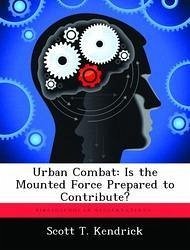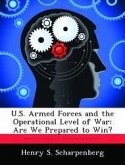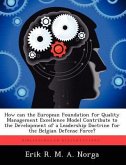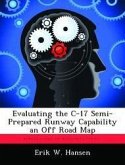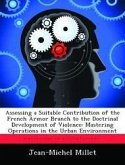The world's growing population is becoming increasingly urbanized. If recent interventions and peacekeeping efforts by the military are indications of future deployments, then the US Army must realize the likelihood of conducting military operations on urban terrain (MOUT). Urban combat is violent, destructive, and filled with ambiguity. Only well prepared and trained units will succeed in combat in the urban environment. As the Army seeks direction in organizing and preparing itself for the next war, armor and mechanized maneuver units, or the "mounted forces" have to grasp the complexities of urban combat and then decide what skills its junior leaders will need in order to accomplish the mission in future conflicts. This monograph asks whether or not the mounted force is prepared to contribute to the next urban combat operation. The monograph compares the current and evolving doctrinal guidance, unit training and leadership development philosophies with the relevant lessons learned from recent cases of high intensity urban combat. Ultimately, the monograph seeks to define the critical skills that mounted force leaders will need to master to succeed in future urban environments. The monograph examines and analyzes four main areas. One, the paper reviews three examples of contemporary high intensity urban combat in order to understand the complexities and difficulties of urban warfare. Two, the monograph reviews current US Army doctrine and the guidance concerning MOUT. Three, the paper reviews Army unit training and leadership development philosophy. Four, it compares eclectically the mounted force's doctrine, training, and leader development with the future requirements and emerging demands of mounted leaders operating in the urban environment. This monograph seeks to evaluate the capability of the mounted force to execute urban combat operations. The monograph concludes that the mounted force as whole is not ready to contribute to the next high-intensity urban c

